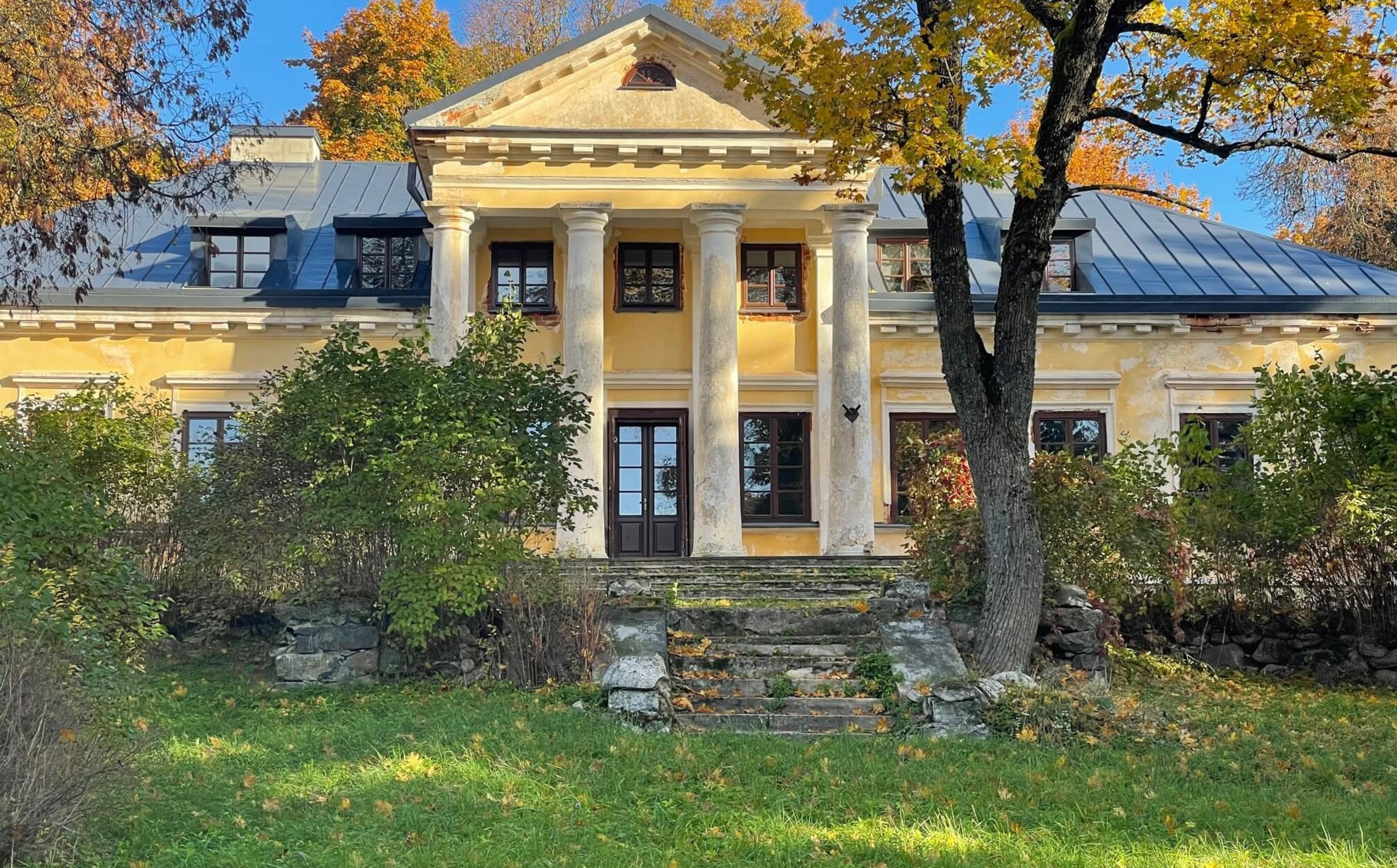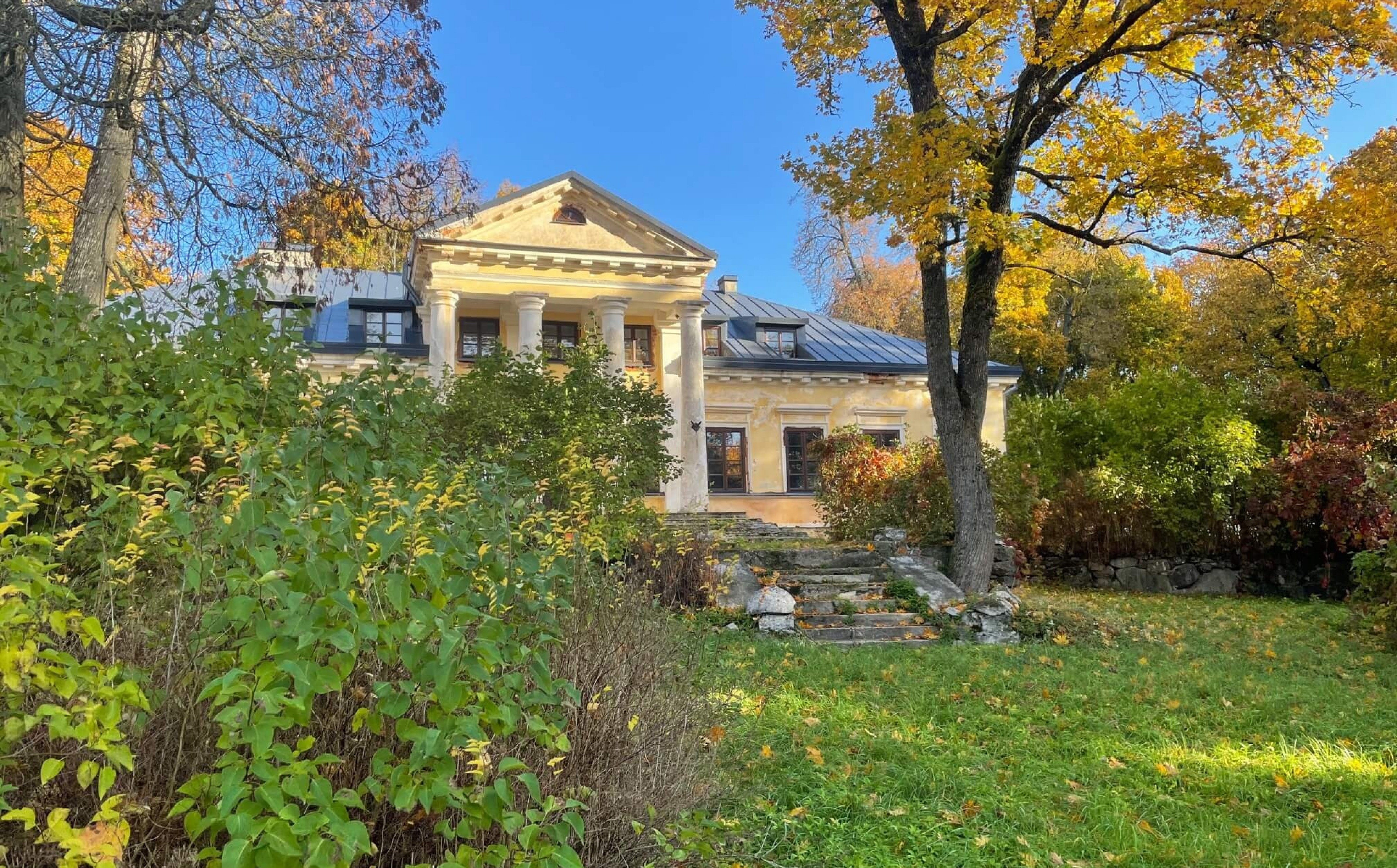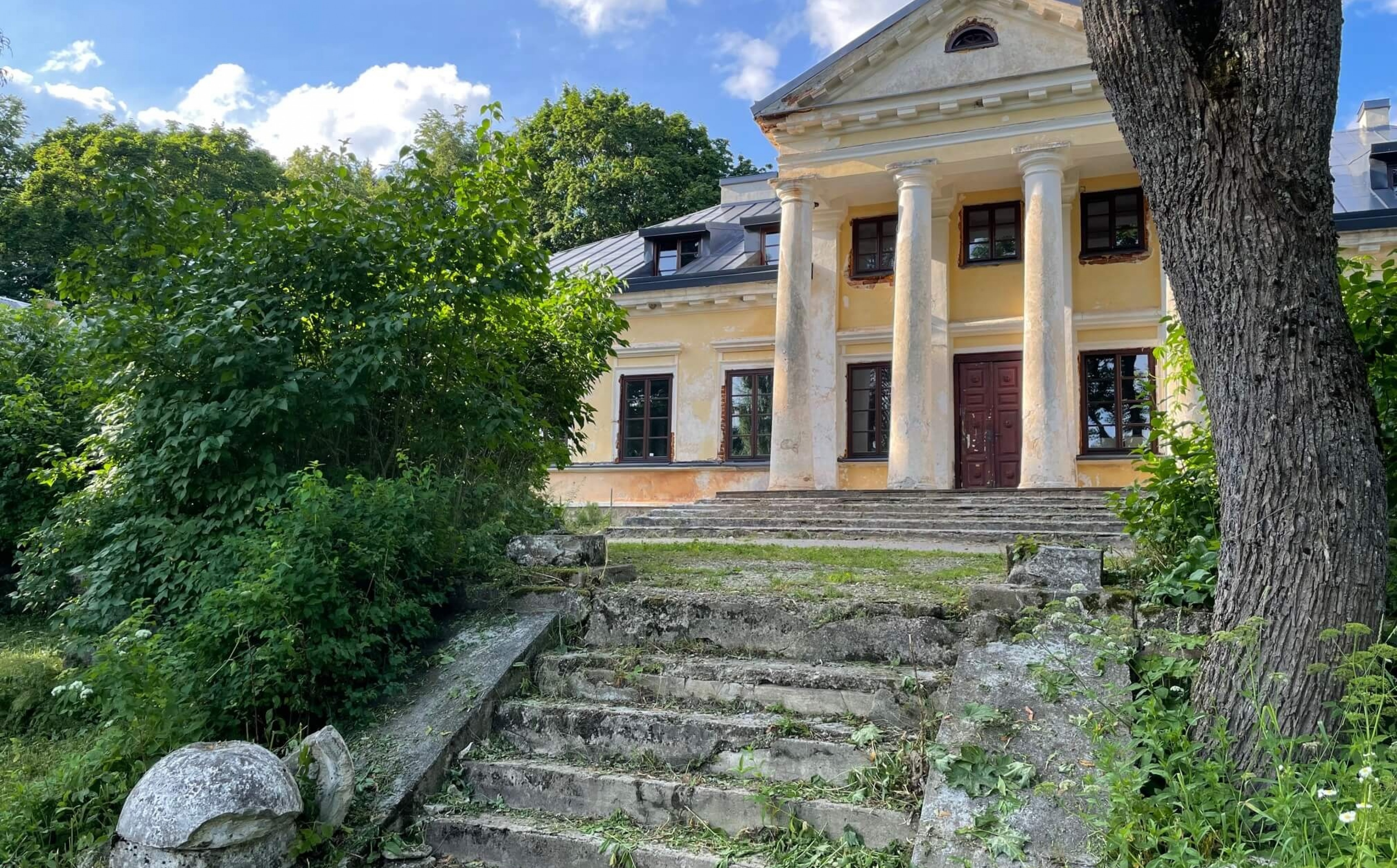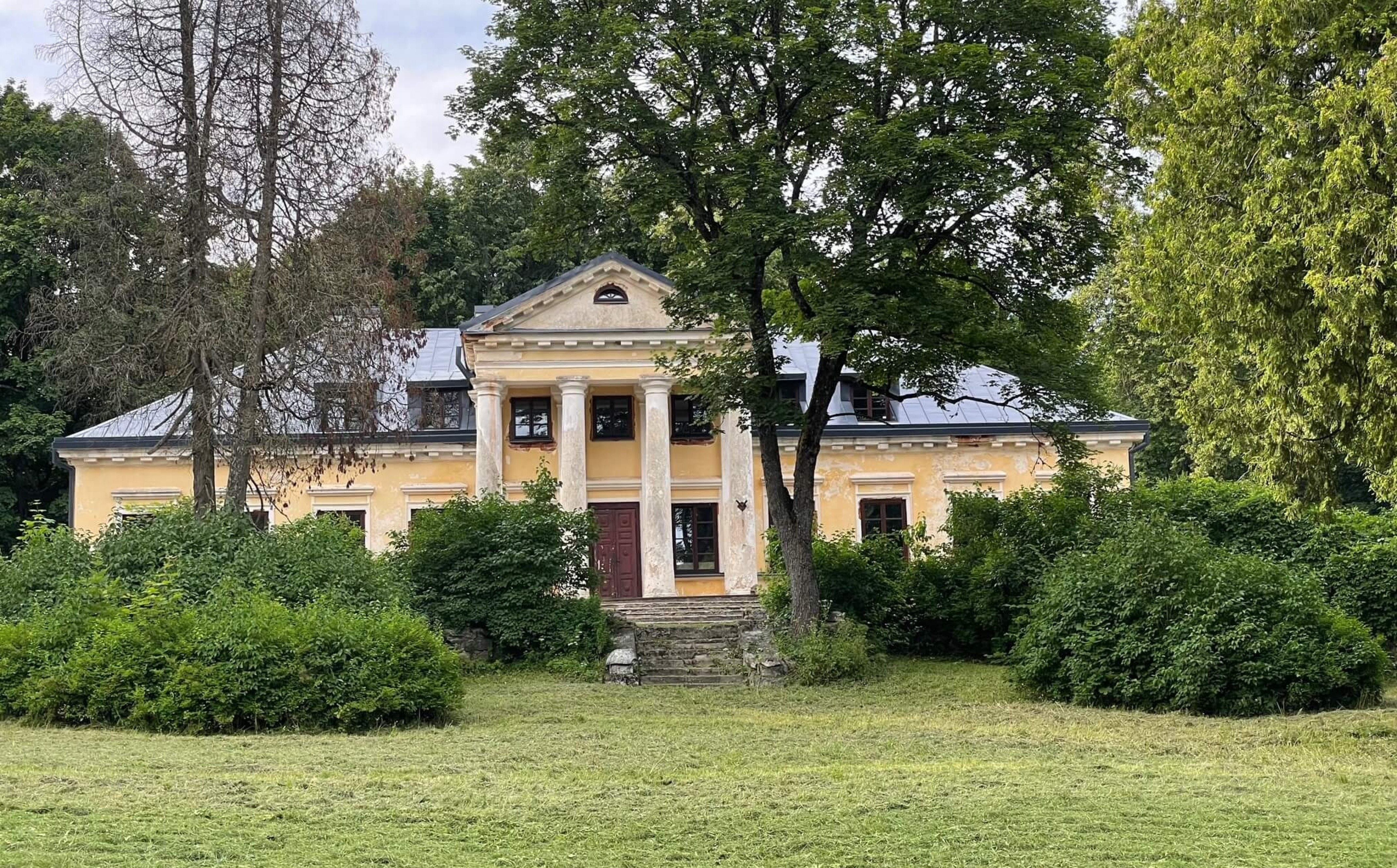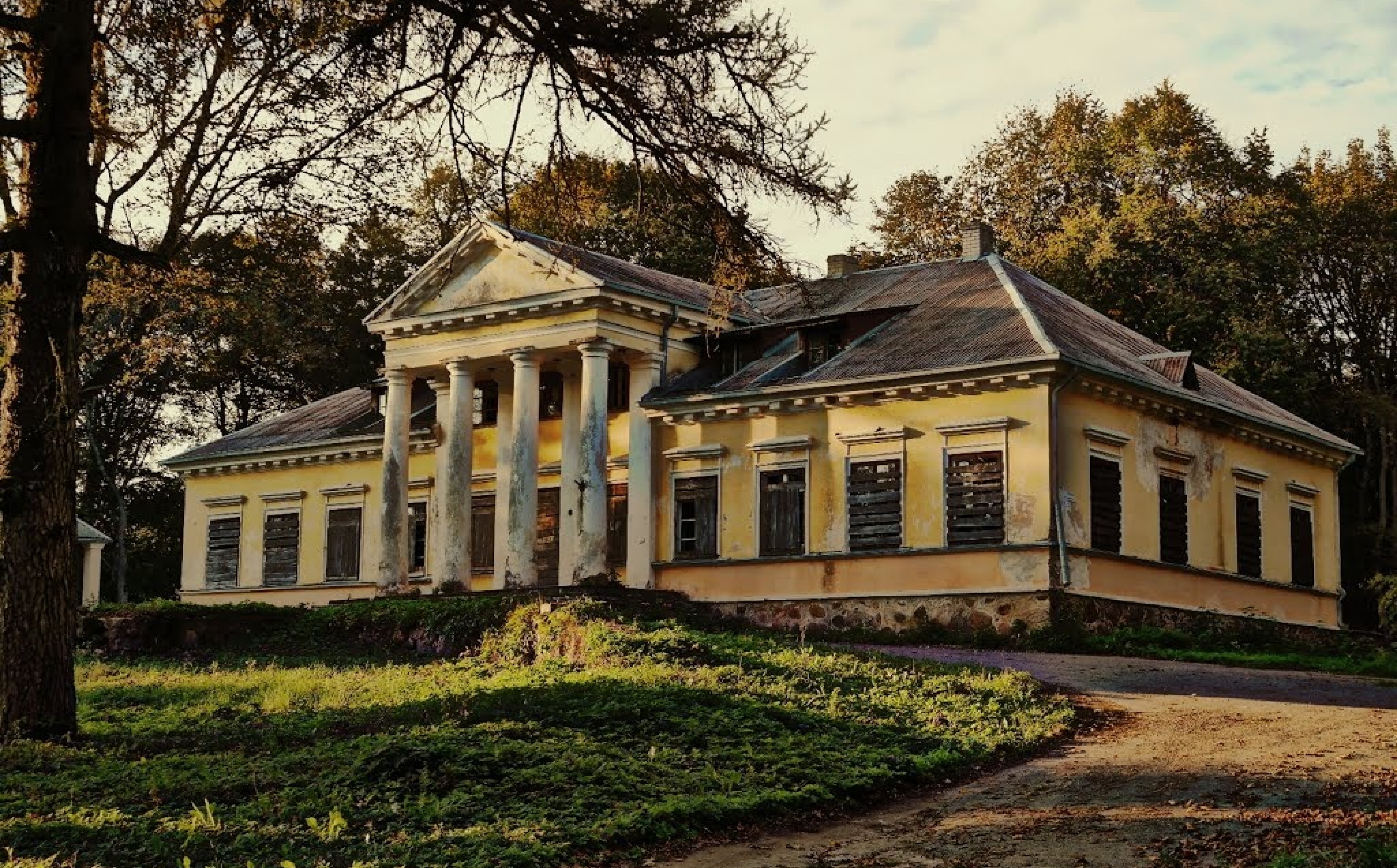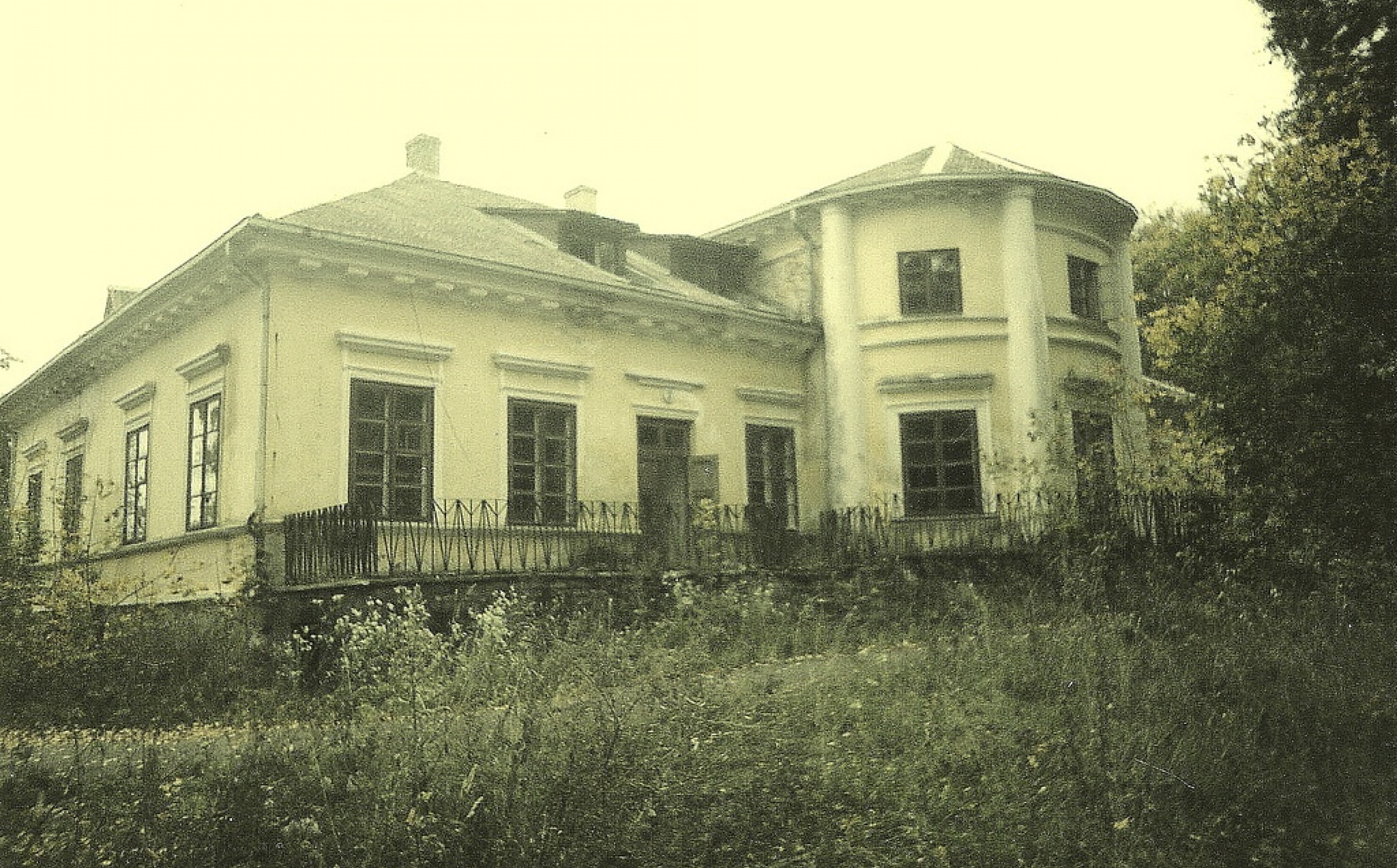Šumskas Laukininkai Manor
- Home
- Castles and Manors
- Šumskas Laukininkai Manor
Laukininkai – a populated area from the I century B.C. The age of the burial ground of Laukininkai located near the Manor is from VII to VIII century. The territory of the Manor is the place of the ancient rites of worship, the Manor possibly have developed from the former Laukininkai Shrine. There is a Pena stream flowing to the East direction which in the Baltic religion and mythology plays a special role. According to Lithuanian historian S. Daukantas, the springs flowing east were considered sacred. There is a bowl stone in the park of the Manor House which is included in the catalogue of sacred places of ancient Lithuania (V. Vaitkevičius "Aukstaitija shrines"). The flat stones found in the manor area, possibly, also belonged to the sacred site structure. The last owner of the manor, Elžbieta Komarienė, used those flat stones and the bowl stone to mark the graves of her dogs.
Laukininkai Manor is already mentioned in the 16th century. The first mentioned are the landowners of Laukininkai (Šumskas) manor Sakavičiai (Sakowicz) – Sakai. The first mansion (15th – 18th century) is reminiscent of a stone paving at a vaulted basement and fragments of the manor's heating system.
Sakai has been mentioned in Lithuanian history since 1413. Famous pioneer Stanislovas Sakas, one of the noblemen of a duke Vytautas the Great who signed the Horodle Union. Stanislovas Sakas had seven sons and paternal (hereditary) estates in Nemenčinė, Hruzdov (Asmena County), Medile and others. Ownership of inherited estates in duke Vytautas time would indicate belonging to the Gediminas family or special merit to that family. For about 150 years, the descendants of Stanislovas Sakas belonged to the Lithuanian nobility, were renowned for their extensive holdings and high positions, and were active in society.
In 1618 the manor of Laukininkai was purchased by Kazimieras Šumskas (Szumsk), a pastoralist of the Vilnius Palace, and named after him Šumskas. Kazimieras Šumskas was named Knight for his honorable manner. He also owned more mansions, including the nearby Kuosinė Manor. The Šumskas belonged to the people of the Radvila family. From 1696 The owners of the Šumskas estate were the assistant of Vilnius Voivodeship Mykolas Rapolas Šumskis (grandson of Kazimieras Šumskas) with his wife Halina Šumska, who built a wooden church and a monastery in the town, and housed the Dominican monks there. The noble Šumskas family ruled the manor for 171 years (1618 – 1789).
In 1789 Šumskas Manor became the property of landowners Laskavičiai (Laskowicz). After the acquisition of the abandoned mansion, the Laskavičiai started to rebuild the Manor. The Šumskas manor homestead forms a unified system of buildings and plants. From the end of 18th century to the beginning of 19th century the stone palace was built in a long-standing park, where the system of paths and alleys is not in classical style. The Classicist palace, was built under the influence of K. Spampani's creative work, together with the parter in front form the homestead's compositional center. In the southern part of the homestead area flows the Pena stream, which is flooded for the mill. The former floor heating system of the old manor has been replaced by furnace heating. Icehouse and barn with the Gothic cellars are preserved. Carriage house, mill, brewery, stables were built in the new mansion environment from wooden to stone masonry and brick.
The Laskavičiai are often mentioned in the famous composer's Oginskis fellowship. In the neighborhood – Zalesė (Užumedis 30 km, near Smurgainiai, now Belarusian territory) was The Oginskis manor. It is likely that Mykolas Kleopas Oginskis, who used to drive nearby would have repeatedly performing in the famous Oval Hall. It is quite possible that Oginskis advised Laskavicius to set up an oval manor with exceptional acoustics during the reconstruction of the manor.
Collectors of the Laskavičiai Church of Šumskas actively participated in the uprisings of 1831 and 1863.
In 1864 the manor house of Šumskas, seized by the Russian tsarist authorities for his involvement in the uprising and assigned to the Russian general Labuncev. Labuncev's daughter Elizabeth 1875; married Antanas Komaras, a representative of a large tribe of Lithuanian nobility. E. Komarienė survived not only her husband but also her daughter with son-in-law. Already a widow, she converted to the Catholic faith and arranged for the Šumskas Dominican Church, which at that time was converted to an orthodox church, to be returned to the Catholics. Unfortunately, this conversion did not redeem the tribe. In 1940 and again in 1944 the estate was expropriated by the Soviet occupation authorities. The Soviet occupiers left Elizabeth Komariene living in an apartment on the first floor of the manor house. A sovchoz office was established in the estate. After the announcement of Lithuania's independence, Šumskas, an agricultural company, was established in place of sovchoz, which took over the rights to the manor.
On 2018 the estate was purchased by the current owners.
